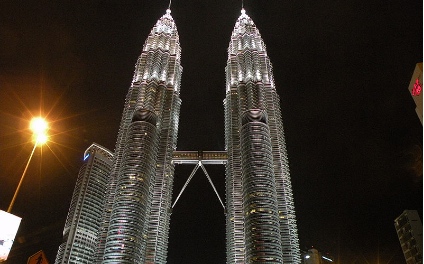Are you always keen to point out that your business centre is located close to a famous landmark? You’re not alone. But why do we care? And more importantly, why do your clients care?
We regularly publish news and press releases on OfficingToday regarding new buildings or business centres. At any given opportunity, such press releases will often allude to local landmarks or recognisable icons, partly to help readers gain a bearing on the new building’s location. But these subtle mentions serve a much deeper purpose, and often aim to create a sense of prestige around the new centre’s location.
Does it work? Try it out for yourself. Take this press release on a new business centre in Kuala Lumpur. You’ll notice that partway through, it states that the new centre is located “close to the Petronas Twin Towers and the KL Convention Centre”.
What are your first thoughts? Even if you don’t know the area, no doubt you have heard of the Petronas Twin Towers. You’re probably already assuming that it’s a plush area with a high level of inward investment, which spells a sought-after location. The Petronas Towers is the tallest twin building in the world and a world-famous landmark, hailed as a 21st century icon of Kuala Lumpur, so it certainly ticks the ‘prestige’ box.
It’s evident then that in this case, the press release not only helps potential clients to pinpoint the location; it also uses that famous landmark to highlight the prestige of the local area. This in turn demonstrates the status and high regard with which the new centre should be associated.
This has several connotations. With a prestigious or famous location comes an automatic acceptance of high quality and inflated pricing, so clients are primed to expect higher-than-average expenditure. It may also attract a certain type of client – one that expects to spend above average in exchange for a location with status, and therefore, one that is likely to be well-established and potentially a long-term resident. And of course, prestige and famous names also attract big-name companies, which is a further ‘claim to fame’ for the business centre.
With this in mind, here’s our take on why landmarks matter:
- Image: For some businesses, image is everything. Invite your clients to a swish, modern business centre overlooking a famous landmark and they’ll probably presume that it’s a successful, well-run business. For some clients, this is a golden opportunity – and they’re willing to pay the price to get it.
- Inward investment: Famous landmarks draw attention and tourists. This can also attract improved infrastructure such as train station improvements, building refurbishments, attractive shops and extra local development.
- Quality: Most centres located in or near to famous landmarks are often fitted out to a high standard, in keeping with the projected quality of the area.
- Usage benefits: A local landmark offers certain ‘usage’ benefits. For instance, having Hyde Park on your doorstep is perfect for lunch breaks or fitness activities, and clients may also find it a plus point for entertaining their own clients.
- Recognisable: It helps potential clients – and their clients – to quickly pinpoint an address.
On the flip side, cost is of course a potential disadvantage. Business centre operators are often required to pay over the odds for real estate in prestigious surroundings, and they must then recoup that cost from clients. Furthermore they must also keep up to date with decor and fit-out, as clients will want to pay less for tired or dated interiors – however upmarket the location.
However for a new centre, the promise of famous neighbours, big-name residents and established, successful clients is a natural draw, and one that will also help to raise awareness of the business centre. That’s important, considering the centre is new, and also because the operator will be keen to recoup their fit-out costs as quickly as possible.
What do you think? Is your business centre located in or near a famous landmark? What do you perceive to be the main benefits or drawbacks of the location? We’re interested to hear your side of the story – leave a comment below or contact the editors to share your thoughts.


 Dr. Gleb Tsipursky – The Office Whisperer
Dr. Gleb Tsipursky – The Office Whisperer Nirit Cohen – WorkFutures
Nirit Cohen – WorkFutures Angela Howard – Culture Expert
Angela Howard – Culture Expert Drew Jones – Design & Innovation
Drew Jones – Design & Innovation Jonathan Price – CRE & Flex Expert
Jonathan Price – CRE & Flex Expert












